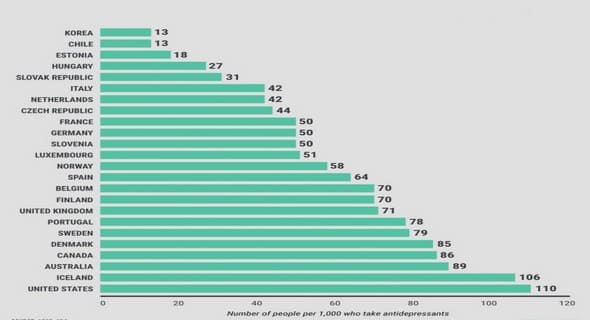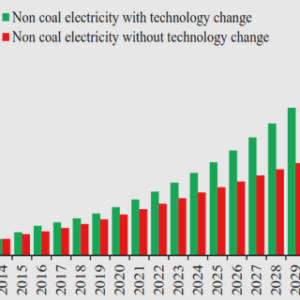(Downloads - 0)
For more info about our services contact : help@bestpfe.com
Table of contents
CHAPTER ONE Ice cores from Alps and temperate regions as climatic and environmental archives
1.1 Glaciochemical records in temperate regions
1.2 Glaciological proxies for environmental and climatic studies
1.3 The history of ice core drilling on Colle Gnifetti
1.4 The 2003 Colle Gnifetti cores: the state of art
1.4.1 Drilling campaign
1.4.2 Density profile
1.4.3 Processing of firn / core ice section
1.4.4 Dating
1.4.5 Stable H and O isotopic analysis
1.4.5.1 Calibration of isotopic ratio as paleo-thermometer
1.4.6 Major ions analysis
1.5 Literature review
1.5.1 Trace elements
1.5.1.1 Alps
1.5.1.2 Pyrenees
1.5.1.3 Andes
1.5.1.4 Tibetan Plateau
1.5.2 Persistent organic pollutants (POPs) and polycyclic aromatic hydrocarbons (PAHs)
CHAPTER TWO Aerosol, trace elements and PAHs: sources, transport pathway and sequestration
2.1 Aerosol
2.1.1 Modal distribution of aerosol
2.1.2 Elementar composition of aerosol particles
2.1.3 Transport processes
2.1.4 Deposition processes
2.1.4.1 Dry deposition
2.1.4.2 Occult deposition
2.1.4.3 Wet and bulk deposition
2.2 Trace elements
2.2.1 Natural emissions
2.2.1.1 Mineral aerosol and Enrichment Factor (EF)
2.2.1.2 Sea-salt spray
2.2.1.3 Volcanic emissions
2.2.1.4 Biogenic emissions
2.2.2 Anthropogenic emissions
2.3 Polycyclic Aromatic Hydrocarbons
2.3.1 Sources of PAHs
2.3.2 Gas to particle distribution in atmosphere
2.3.3 Gas to particle distribution in atmosphere
CHAPTER THREE Instrumentation: principle of methods
3.1 Inductively Coupled Plasma Mass Spectrometry (ICP-MS)
3.1.1 Sample introduction system
3.1.1.1 APEX™ desolvation unit
3.1.2 Plasma source
3.1.3 Interface region
3.1.4 Vacuum system
3.1.5 Ion focusing lenses
3.1.6 Mass analyzer
3.1.6.1 Quadrupole mass analyzer
3.1.6.2 Double focusing sector field analyzer
3.1.7 Detector
3.1.8 Resolution in ICP-MS
3.1.9 Interferences in ICP-MS
3.1.10 ICP-QMS: instrument and setting up
3.1.11 ICP-SFMS: instrument and setting up
3.2 ICP Optical Emission Spectroscopy (ICP-OES)
3.2.1 ICP excitation source
3.2.2 Dispersive optical system and spectral lines
3.2.3 Detector
3.2.4 Instrument and setting up
3.3 High Performance Liquid Chromatography (HPLC)
3.3.1 Pumps and introduction system
3.3.2 Separation column and stationary phases
3.3.3 Detectors
3.3.3.1 Photodiode Array
3.3.3.2 Fluorimetric
3.3.4 Instrument and setting up
3.4 Coulter Counter
3.4.1 Instrument and setting up
CHAPTER FOUR The ice/firn core melting system
4.1 The decontamination of ice cores: from chiselling to melting system devices
4.2 Melting heads: design and manufacturing
4.3 The continuous flow analysis
4.3.1 Continuous ICP-Q-MS measurements
4.3.2 Continuous conductivity measurements
4.3.3 Discrete sampling
4.3.4 On-line SPE extraction of PAHs
4.3.5 SPE storage and elution procedure
4.3.6 Washing of melting head and tubing
4.4 Ice core melting procedure
CHAPTER FIVE Methods validation and quality control
5.1 Continuous ICP-QMS measurements
5.1.1 Calibration
5.1.2 Procedural blanks
5.1.3 Detection limits
5.1.4 Decontamination efficiency
5.1.5 Instrumental accuracy and recovery tests
5.1.6 Instrumental repeatability
5.2 Discrete ICP-SFMS measurements
5.2.1 Calibration
5.2.2 Procedural blanks
5.2.3 Detection limits
5.2.4 Instrumental precision, accuracy and recovery tests
5.3 Discrete ICP-OES measurements
5.3.1 Calibration
5.3.2 Procedural blanks
5.3.3 Detection limits
5.3.4 Instrumental precision, accuracy and recovery tests
5.4 Solid phase extraction and HPLC analysis
5.4.1 Calibration
5.4.2 Blanks value
5.4.3 Procedural blanks
5.4.4 Detection limits
5.4.5 Instrumental precision, accuracy and recovery tests
5.4.6 Procedural reproducibility
5.5 Coulter Counter
CHAPTER SIX Trace element profiles
6.1 Character of the data
6.2 Multivariate exploratory techniques for identifying patterns and different principal sources
6.2.1 Principal component analysis (PCA): princples
6.2.2 PCA on Colle Gnifetti firn/ice core
6.3 Short term variations
6.3.1 Contribution of anthropogenic and natural sources
6.3.2 Meteorological factors: air masses and boundary layer
6.3.3 Short-term intense emissions event
6.4 Crustal trace elements long-term variations
6.4.1 Concentrations profiles
6.4.2 Near-bedrock ice core samples
6.4.3 Natural emissions of trace elements
6.5 Anthropogenic metals long-term variations
6.5.1 Variations during Greek and Roman empires (500 BC – 400 AD)
6.5.2 Variations during Early Middle Ages (400 AD – 800 AD)
6.5.3 Variations during Late Middle Ages (800 AD – 1400 AD)
6.5.4 Variations during in pre-industrial period (1400 AD – 1700 AD)
6.5.5 Variations during in industrial period (1700 AD – 2000 AD)
6.5.5.1 European trace elements inventories: the state of art
6.5.5.2 Pb profile and European emissions
6.5.5.3 Cd profile and European emissions
6.5.5.4 Zn profile and European emissions
6.5.5.5 U profile and European emissions
CHAPTER SEVEN Polycyclic Aromatic Hydrocarbons profiles
7.1 PAHs concentrations in snow and ice samples
7.2 PAHs concentrations and profiles
7.3 PAHs pattern
7.4 European PAHs emissions inventories
7.5 Short-term PAHs variability
7.5.1 Global distillation or Grasshopper effect
7.5.2 PAHs short-term variability and climate linkage
CHAPTER EIGHT Radioactive 239Pu fallout record
8.1 Plutonium: a recent global pollutant
8.2 A novel ICP-MS direct injection method for 239Pu determination in alpine snow/ice samples
8.3 239Pu profile in Colle Gnifetti core
8.3.1 239Pu profile and nuclear tests in atmosphere
8.3.2 Comparison between CG core and other environmental records
CHAPTER NINE Lead isotopes profile
9.1 206Pb / 207Pb ratio profile 1
9.1.1 206Pb / 207Pb in the last three centuries
9.1.2 206Pb / 207Pb profile in 65-75 m of depth: an helpful tool for dating evaluation?
References


